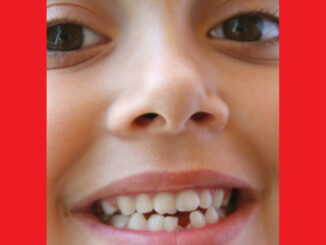
With Santa’s visit still fresh on our minds, one might wonder what he is doing during his downtime. We have been told that Santa occasionally takes this time to visit his other magical friends, the Easter Bunny, Mother Nature and the Tooth Fairy!

History of the Tooth Fairy
Versions of the Tooth Fairy have been documented since the 13th century! The Vikings used to leave money for baby teeth and wear them into battle, as they were believed to bring good luck. Children could impart a “tooth fee” to Nordic men looking for teeth to wear. In medievaltimes, people believed it was of critical importance to dispose of baby teeth correctly. They could be hidden, burned, buried or swallowed to protect the children from evil spirits. The French and South American people believed in a kind little mouse that would scoop up children’s teeth at night and use them to defeat an evil rodent king. There are many children’s books about these characters, like the example below:
When does the Tooth Fairy start visiting?
The typical age for the tooth fairy to make her first visit is around six years old. She will continue to make intermittent visits until age 12-13, on average. Below is a useful guide for the most common ages that baby teeth are lost.
When teeth start to get really “wiggly,” it is important to work on getting them out as quickly as possible so they do not cause problems for the permanent tooth growing in behind. You can work on wiggling them while reading, watching a movie, or even in the car. Don’t forget to wash hands first!
“Oh no! My child is seven and has not lost any teeth!”
Rest assured, there is a very wide range of “normal” when it comes to timing of teeth coming and going. Some children get teeth later than others and that is usually no problem at all. However, if you have concerns about the timing of your child’s teething, it is always best to ask your pediatric dentist.
What happens when my child does start to get permanent teeth?
The most important thing to do at home is to make sure to keep them very clean with the toothbrush and dental floss! Also, around age six or seven, your pediatric dentist will likely recommend a Panoramic radiograph or a “growth and development” X-ray to make sure all the permanent teeth are present and growing in the right way. This is also the age when you may be recommended to see an orthodontist for the first time, depending on how your child is growing. Lastly, don’t forget to see your pediatric dentist every six months!
-by Dr. Madison Galloway
About the Authors: Dr. Mandy Ashley, Dr. Madison Galloway and Dr. Tyler McCubbins are Board Certified Pediatric Dentists proud to serve the communities of Bowling Green, Hopkinsville and Glasgow! We look forward to sharing our vision of excellent comprehensive dental care that is fun for children and people with special healthcare needs with your family. SKY Pediatric Dentistry has been providing dental care to children and adults with special needs since 2013. As board-certified specialists in dentistry for children, our team strives to make going to the dentist as fun as possible while maintaining high-quality treatment and preventative measures. We tailor treatment plans to each child and offer a wide range of treatment options, including sedation, in-office general anesthesia and also hospital-based dentistry. With over 25 YEARS of doctor experience, SKY Pediatric Dentistry is a great choice for children’s dental care in Bowling Green, Hopkinsville and Glasgow!
References: https://r.search.yahoo.com/_ylt=AwrNY7R49pFjBcAAC0CjzbkF;_ylu=c2VjA2ZwLWF0dHJpYgRzbGsDcnVybA–/RV=2/RE=1670539000/RO=11/RU=http%3a%2f%2fwww.vance.af.mil%2fNews%2fFeatures%2fDisplay%2ftabid%2f3196%2fArticle%2f372662%2fno-those-arent-temporary-teeth.aspx/RK=2/RS=TUCRpCf3xXQ_PflB4emS_TRmLfA-



